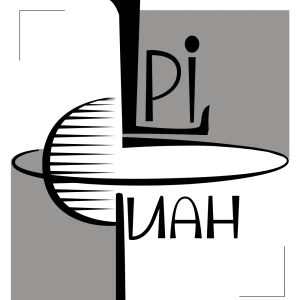Sensing with photoluminescent semiconductor quantum dots
Publication type: Journal Article
Publication date: 2019-01-24
scimago Q2
wos Q3
SJR: 0.475
CiteScore: 4.6
Impact factor: 2.4
ISSN: 20506120
PubMed ID:
30530939
Spectroscopy
Atomic and Molecular Physics, and Optics
General Materials Science
Instrumentation
Abstract
Fluorescent sensors benefit from high signal-to-noise and multiple measurement modalities, enabling a multitude of applications and flexibility of design. Semiconductor nanocrystal quantum dots (QDs) are excellent fluorophores for sensors because of their extraordinary optical properties. They have high thermal and photochemical stability compared to organic dyes or fluorescent proteins and are extremely bright due to their large molar cross-sections. In contrast to organic dyes, QD emission profiles are symmetric, with relatively narrow bandwidths. In addition, the size tunability of their emission color, which is a result of quantum confinement, make QDs exceptional emitters with high color purity from the ultra-violet to near infrared wavelength range. The role of QDs in sensors ranges from simple fluorescent tags, as used in immunoassays, to intrinsic sensors that utilize the inherent photophysical response of QDs to fluctuations in temperature, electric field, or ion concentration. In more complex configurations, QDs and biomolecular recognition moieties like antibodies are combined with a third component to modulate the optical signal via energy transfer. QDs can act as donors, acceptors, or both in energy transfer-based sensors using Förster resonance energy transfer (FRET), nanometal surface energy transfer (NSET), or charge or electron transfer. The changes in both spectral response and photoluminescent lifetimes have been successfully harnessed to produce sensitive sensors and multiplexed devices. While technical challenges related to biofunctionalization and the high cost of laboratory-grade fluorimeters have thus far prevented broad implementation of QD-based sensing in clinical or commercial settings, improvements in bioconjugation methods and detection schemes, including using simple consumer devices like cell phone cameras, are lowering the barrier to broad use of more sensitive QD-based devices.
Found
Nothing found, try to update filter.
Found
Nothing found, try to update filter.
Top-30
Journals
|
1
2
3
|
|
|
Chemistry of Materials
3 publications, 2.91%
|
|
|
Journal of Fluorescence
3 publications, 2.91%
|
|
|
Journal of Physical Chemistry C
2 publications, 1.94%
|
|
|
Chemical Communications
2 publications, 1.94%
|
|
|
Biosensors
2 publications, 1.94%
|
|
|
Molecules
2 publications, 1.94%
|
|
|
Applied Physics A: Materials Science and Processing
2 publications, 1.94%
|
|
|
Environmental Research
2 publications, 1.94%
|
|
|
Small
2 publications, 1.94%
|
|
|
ACS applied materials & interfaces
2 publications, 1.94%
|
|
|
The Analyst
2 publications, 1.94%
|
|
|
Nanoscale Advances
2 publications, 1.94%
|
|
|
Optical Materials
2 publications, 1.94%
|
|
|
Analytical Imaging Techniques for Soft Matter Characterization
2 publications, 1.94%
|
|
|
Sensors
1 publication, 0.97%
|
|
|
Nanomaterials
1 publication, 0.97%
|
|
|
Microchimica Acta
1 publication, 0.97%
|
|
|
Analytical and Bioanalytical Chemistry
1 publication, 0.97%
|
|
|
Nature Communications
1 publication, 0.97%
|
|
|
Journal of Physical Chemistry Letters
1 publication, 0.97%
|
|
|
Journal of Molecular Structure
1 publication, 0.97%
|
|
|
Food Control
1 publication, 0.97%
|
|
|
Matter
1 publication, 0.97%
|
|
|
Archives of Biochemistry and Biophysics
1 publication, 0.97%
|
|
|
Sensors and Actuators, A: Physical
1 publication, 0.97%
|
|
|
Analytical Biochemistry
1 publication, 0.97%
|
|
|
Journal of Molecular Liquids
1 publication, 0.97%
|
|
|
TrAC - Trends in Analytical Chemistry
1 publication, 0.97%
|
|
|
Microporous and Mesoporous Materials
1 publication, 0.97%
|
|
|
1
2
3
|
Publishers
|
5
10
15
20
25
30
|
|
|
Elsevier
30 publications, 29.13%
|
|
|
Springer Nature
19 publications, 18.45%
|
|
|
American Chemical Society (ACS)
15 publications, 14.56%
|
|
|
Royal Society of Chemistry (RSC)
11 publications, 10.68%
|
|
|
Wiley
9 publications, 8.74%
|
|
|
MDPI
7 publications, 6.8%
|
|
|
Walter de Gruyter
2 publications, 1.94%
|
|
|
Pleiades Publishing
1 publication, 0.97%
|
|
|
Institute of Electrical and Electronics Engineers (IEEE)
1 publication, 0.97%
|
|
|
Bentham Science Publishers Ltd.
1 publication, 0.97%
|
|
|
SPIE-Intl Soc Optical Eng
1 publication, 0.97%
|
|
|
Autonomous Non-profit Organization Editorial Board of the journal Uspekhi Khimii
1 publication, 0.97%
|
|
|
Frontiers Media S.A.
1 publication, 0.97%
|
|
|
IOP Publishing
1 publication, 0.97%
|
|
|
Cambridge University Press
1 publication, 0.97%
|
|
|
Mary Ann Liebert
1 publication, 0.97%
|
|
|
5
10
15
20
25
30
|
- We do not take into account publications without a DOI.
- Statistics recalculated weekly.
Are you a researcher?
Create a profile to get free access to personal recommendations for colleagues and new articles.
Metrics
103
Total citations:
103
Citations from 2024:
28
(27.18%)
Cite this
GOST |
RIS |
BibTex |
MLA
Cite this
GOST
Copy
Chern M. et al. Sensing with photoluminescent semiconductor quantum dots // Methods and Applications in Fluorescence. 2019. Vol. 7. No. 1. p. 12005.
GOST all authors (up to 50)
Copy
Chern M., Kays J. C., Bhuckory S., Dennis A. Sensing with photoluminescent semiconductor quantum dots // Methods and Applications in Fluorescence. 2019. Vol. 7. No. 1. p. 12005.
Cite this
RIS
Copy
TY - JOUR
DO - 10.1088/2050-6120/aaf6f8
UR - https://doi.org/10.1088/2050-6120/aaf6f8
TI - Sensing with photoluminescent semiconductor quantum dots
T2 - Methods and Applications in Fluorescence
AU - Chern, Margaret
AU - Kays, Joshua C
AU - Bhuckory, Shashi
AU - Dennis, Allison
PY - 2019
DA - 2019/01/24
PB - IOP Publishing
SP - 12005
IS - 1
VL - 7
PMID - 30530939
SN - 2050-6120
ER -
Cite this
BibTex (up to 50 authors)
Copy
@article{2019_Chern,
author = {Margaret Chern and Joshua C Kays and Shashi Bhuckory and Allison Dennis},
title = {Sensing with photoluminescent semiconductor quantum dots},
journal = {Methods and Applications in Fluorescence},
year = {2019},
volume = {7},
publisher = {IOP Publishing},
month = {jan},
url = {https://doi.org/10.1088/2050-6120/aaf6f8},
number = {1},
pages = {12005},
doi = {10.1088/2050-6120/aaf6f8}
}
Cite this
MLA
Copy
Chern, Margaret, et al. “Sensing with photoluminescent semiconductor quantum dots.” Methods and Applications in Fluorescence, vol. 7, no. 1, Jan. 2019, p. 12005. https://doi.org/10.1088/2050-6120/aaf6f8.
























